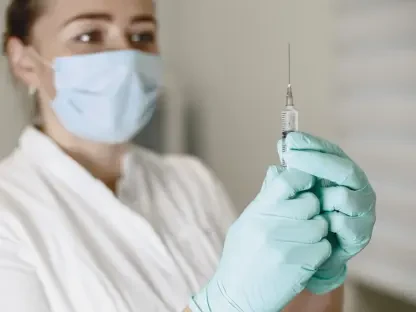In the heart of rural America, where vast landscapes stretch between small towns, a quiet crisis unfolds as healthcare providers grapple with an unprecedented challenge, intensified by new legislation. On July 4, 2025, a monumental piece of legislation, known as the “One, Big, Beautiful Bill Act” (OBBBA), became law, slashing vital funding for Medicaid and ACA subsidies. For communities already battling hospital closures and limited access to care, this policy has turned a lifeline into a looming threat. The question now is whether rural healthcare, long under strain, can weather this storm or transform itself under pressure.
A Crisis Unfolding in Rural America
Rural healthcare stands at a precarious edge, with over 100 hospitals teetering on the brink of closure and another 600 deemed vulnerable across the nation. The recent enactment of OBBBA has intensified this fragility by cutting critical financial support, leaving millions at risk of losing coverage. Safety-net hospitals, often the only source of care in remote areas, face an immediate threat to their survival as operating margins, already as low as 1-2%, shrink further under the weight of reduced reimbursements.
The impact extends beyond numbers, touching the lives of families who rely on these facilities for everything from emergency services to chronic disease management. In towns where the nearest hospital might be hours away, the loss of local care can mean the difference between life and death. This policy shift has placed rural America at the epicenter of a national debate on healthcare sustainability, raising urgent concerns about equity and access in underserved regions.
The Dual Nature of OBBBA’s Impact
At its core, OBBBA presents a paradox for rural healthcare systems. On one hand, the legislation delivers a harsh blow through trillions in cuts to essential programs, inflating the federal deficit and destabilizing the financial foundation of many providers. This threatens to widen the gap in care for millions, particularly in areas where alternative options are scarce or nonexistent, pushing an already strained system closer to collapse.
On the other hand, tucked within this controversial bill lies a potential glimmer of hope: the $50 billion Rural Health Transformation Program (RHTP), set to unfold over the next decade. Designed to spur modernization, this initiative aims to fund digital upgrades and innovative care models, offering a chance for rural providers to adapt and evolve. While the funding pales in comparison to the cuts, it positions rural America as a testing ground for the future of healthcare, where necessity might just breed reinvention.
Challenges and Opportunities in a Fragile System
Rural healthcare faces a daunting array of obstacles under OBBBA’s stringent conditions, with financial strain topping the list. Many facilities operate on the thinnest of margins, ill-prepared to absorb the loss of federal support, which accelerates the risk of closures and leaves communities vulnerable. This economic pressure compounds the challenge of maintaining even basic services, let alone investing in new approaches or technologies.
Structural barriers further complicate the landscape, as geographic isolation, persistent workforce shortages, and outdated infrastructure hinder both access and progress. Yet, within RHTP’s framework, there are seeds of opportunity—mandates for telehealth adoption and modular urgent care units could bridge some of these gaps. For instance, telehealth has demonstrated cost savings of $147 to $186 per visit by reducing travel and productivity losses, illustrating a practical path forward if providers can navigate the initial hurdles of implementation.
The scale of the challenge remains stark, with hundreds of facilities hanging in the balance, but the potential for transformation exists. If rural systems can leverage RHTP’s resources to overhaul outdated practices, they might not only survive but also set a precedent for efficiency. This delicate balance between imminent risk and possible innovation defines the current moment for these communities.
Perspectives from the Field on Rural Resilience
Insights from those on the frontlines shed light on the real-world implications of this policy upheaval. Dr. Rafid Fadul, a pulmonary critical care physician and digital health executive, views RHTP as a critical “forcing function” that could compel rural providers to embrace change. He argues that the dire circumstances created by funding cuts might finally push systems to adopt long-overdue innovations, turning a crisis into a catalyst for better care delivery.
However, skepticism persists among other experts who question the adequacy of the $50 billion allocation against the backdrop of trillion-dollar reductions. Data adds weight to both sides of the debate—remote monitoring technologies have shown a 22% positive return on investment, suggesting viability, while ventures like General Catalyst’s $485 million acquisition of Summa Health highlight the private sector’s role in testing new models. Dr. Fadul’s frustration with “pilot purgatory,” where promising solutions stall in bureaucratic limbo, underscores a systemic barrier that rural leaders must overcome to drive meaningful progress.
These diverse viewpoints paint a complex picture of hope tempered by harsh realities. The urgency for rural providers to take the lead is palpable, as failure to adapt could mean not just local losses but a missed opportunity to reshape national healthcare practices. Their experiences and experiments in this high-stakes environment carry lessons for the entire system.
Strategies for Transformation Amid Constraints
Navigating OBBBA’s challenges requires actionable steps tailored to the unique needs of rural healthcare, aligned with RHTP’s goals. Adopting virtual-first care stands out as a priority, using telehealth to connect patients across vast distances, thereby cutting costs and expanding reach for those far from physical facilities. This shift could redefine access in areas where travel to care is a significant barrier.
Equally critical is the implementation of team-based care models, restructuring workflows to maximize the impact of limited staff. By focusing on collaboration, rural providers can enhance efficiency without requiring vast new resources. Additionally, prioritizing digital infrastructure through RHTP funds—ensuring interoperability and modern compliance systems—can streamline operations, reducing administrative burdens that often bog down small facilities.
Finally, right-sizing facilities offers a pragmatic solution, moving toward mobile clinics and modular urgent care setups that meet community needs without overextending budgets. These strategies collectively form a blueprint for survival and innovation, enabling rural healthcare to potentially emerge as a model of patient-centered efficiency if executed with precision and resolve.
Reflecting on a Pivotal Moment
Looking back, the introduction of OBBBA marked a turning point that tested the very foundation of rural healthcare in America. The deep cuts to essential funding threatened to unravel the fragile safety net that countless communities depended upon, while the simultaneous push for modernization through RHTP offered a narrow window of opportunity. The voices from the field, coupled with emerging data, painted a picture of both peril and possibility.
Moving forward, the focus must shift to sustained action—rural providers need to harness every available resource, from telehealth to innovative care models, to build resilience. Policymakers, too, must recognize the broader implications of these local struggles, ensuring that future reforms bolster rather than burden vulnerable systems. The path ahead demands collaboration and commitment to turn lessons learned into lasting change, setting a course for a healthcare landscape that serves all corners of the nation with equity and care.









